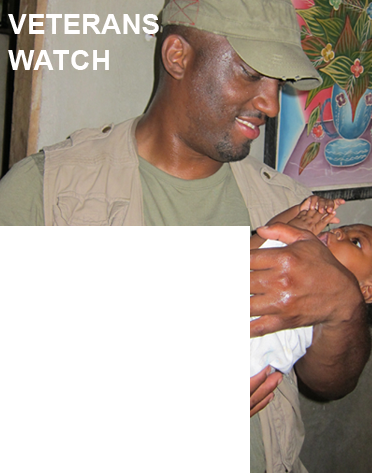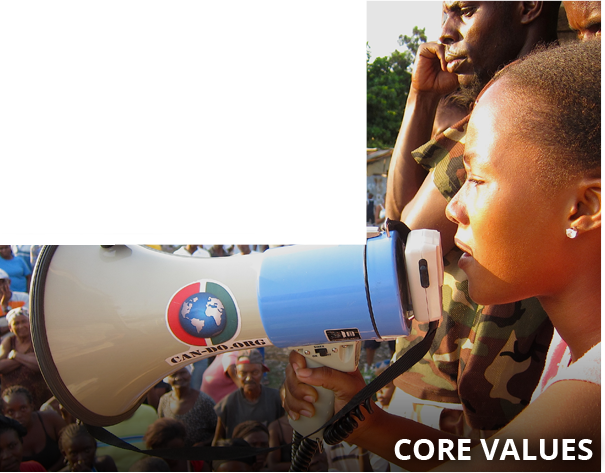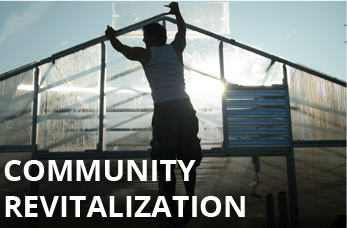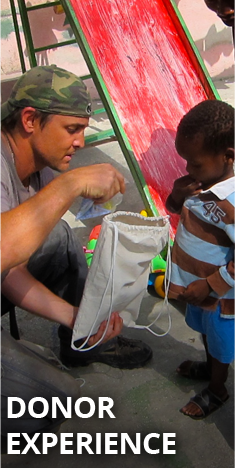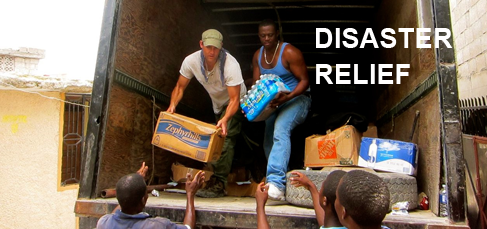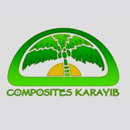- RUNDOWN
- TEAM
- PARTNERS
- MORE
HAITI DOME PROJECT – 2010-2012
THE SITUATION: More than 1 million people in Haiti were displaced following the January 2010 earthquake. Thousands other structures, including clinics and schools were destroyed. Months and years following the disaster, very few sustainable structures have been rebuilt to support survivors of the quake.
OUR SOLUTION: By fall of 2010, CAN-DO began to shift our efforts from short-term to long-term recovery. We sought a solution that was both effective and sustainable. The premise was simple: build structures that serve as the foundation for customized community centers devoted to specific needs. The dome project was initiated by CAN-DO with a donation from the Boehm-Gladen Foundation, and branched out to be a collaborative effort between manufacturers, foundations, educators, and service providers who shared a common vision: to raise dignity, improve quality of life and create sustainable communities for the people of Haiti by providing cost-effective, innovative solutions. The guiding principles of the dome project included a flexible and design that addressed community needs, a commitment to local manufacturing and job creation, and implemented with the maximization of resources, use of renewable energy and materials in an accountable manner. These Community Revitalization Centers (CRCs) offered a solution that was affordable enough to qualify as transitional yet durable and comfortable enough to serve long-term needs in Haiti.
WHY DOMES?
• The durable fiberglass dome structures have a life expectancy of more than 25 years.
• They are heat reflective, have cool interiors and are resistant to fire, rain, and winds up to 130 mph
• An entire cluster dome structures can easily be constructed in one day
• A single unit structure can be put up in less than 30 minutes by just two semi-skilled workers
• They are manufactured in Haiti by Composites Karayib and use local labor to produce, transport and erect the domes onsite which saves on costs and generates new jobs within the country
• They are ideal for use as medical clinics, school, dormitories, administrative offices and more, they are easily expandable and transportable. They can also be disassembled and repurposed for use elsewhere should permanent structures or more suitable locations become available.
• Read more about the domes, including pricing per unit here (pdf)
WHAT WE BUILT:
• CAN-DO opened a large manufacturing plant in Haiti to build the fiberglass domes. The plant provided haitian employment and supported the local economy by driving business to Composites Karayib fiberglass company.
• Worked with local government officials to cut through the red-tape and identify areas of Port-au-Prince with the greatest need for the domes and get fast approval for the builds.
• Installed a total of 5 large structures – four of which served as large medical clinics in neglected areas and one school with more than 1,200 students.
o Women’s Center & Birthing Clinic – Petionville, Haiti: This dome from CAN-DO was located at JPHRO’s camp and served as a five bed labor and delivery unit as well as a center for labor and delivery training programs for Haitian Nurses.
o Croix des Bouquets School – This dome was built in an area where no schools were available to survivors displaced from the quake. The dome provided classrooms and safe learning environment for more than 1,200 students.
o Women’s Wellness Center – Cite Soleil, Haiti: We Advance received a dome from CAN-DO for use as a women’s medical center. This center was designed to not only provide medical services to woman in this area, but also be used for shelter and educational purposes to empower women in the community.
o Haiti Clinic – Cite Soleil, Haiti: This dome from CAN-DO was strategically placed in an area where residents don’t have access to transportation to travel for medical care, and there are no nearby facilities, particularly to treat children.
o VMRT Clinic – Delmas 33, Haiti: Vermont Medical Response Team received a dome from CAN-DO for acute medical cases and as a hub for medical supplies and community education outreach.









FOR IMMEDIATE RELEASE
JANUARY 25th, 2011
CAN-DO.ORG BUILDS DOMES IN HAITI
Opening of Factory Brings Jobs and Shelters to Devastated Communities
(PRWEB) CAN-DO.org (Compassion into Action Network – Direct Outcome Organization) has officially launched the Haiti Domes Project with the opening of a manufacturing plant and the placement of its first fiberglass domes in Port-Au-Prince and the surrounding areas. The structures, which have a life expectancy of more than 25 years and are resistant to fire, rain and winds up to 130 miles per hour, are manufactured in Haiti by Composites Karayib, using local labor to produce, transport and erect the domes on-site.
Says Eric Klein, founder of CAN-DO.org , “It’s been a year since the earthquake and there has been very little meaningful improvement in quality of life related to schools, medical facilities and shelter. Through the Haiti Domes Project, we’re offering strong and safe structures, creating jobs, and coordinating with others to enhance sustainability. Most importantly, we’re doing it without the “red tape” – by getting out on the ground, talking to the people, and making things happen that have a measurable and positive impact at the community level.”
In September 2010, J/P Haitian Relief Organization, founded by Sean Penn, received a standard Simplex dome from CAN-DO.org for use as a five bed labor and delivery unit. Currently, an average of 15 babies are being born per week in the birthing clinic and it is also used as part of a 16-class labor and delivery training program for Haitian nurses. Shortly after placement, former President Bill Clinton toured the dome to assess its suitability for similar projects planned by the Clinton Global Initiative.
The Simplex dome measures 18 by 25 feet and can be built in under a half-hour by two semi-skilled workers. Through the Haiti Domes Project, CAN-DO.org offers a solution that is affordable enough to qualify as transitional yet durable and comfortable enough to serve long-term needs in Haiti. Ideal for use as medical clinics, schools, dormitories, administrative offices and more, Composites Karayib’s fiberglass domes are easily expandable and transportable, and can also can be disassembled and repurposed for use elsewhere should permanent structures or more suitable locations become available. Only groups with a reputable track record and a commitment to long-term recovery in Haiti will be considered eligible to receive a structure.
On the recent January 12th anniversary of the earthquake, WE ADVANCE received a dome from CAN-DO.org for use as a Women’s Wellness Center.
The last bolts were tightened at 4:54 pm, marking the exact one-year anniversary of the earthquake. A brief memorial ceremony at the event included a Remembrance Prayer and other acknowledgments. WE ADVANCE was founded by actress Maria Bello, Barbara Guillaume, Alison Thompson and humanitarian Aleda Frishman.
The women’s clinic represents the first in a series of collaborative community centers planned by the Haiti Domes Project in the coming weeks and months, designed to provide shelters, services and supplies for medical, educational, and other community oriented purposes. Shortly before the New Year, CAN-DO began contacting Haitian mayors to determine their interest in similar community centers for their cities, and based on initial positive feedback, hopes to confirm participation by The National Leadership Conference of Haitian Mayors (NLCHM) in the near future.
According to Joseph G. “Billy” Louis. Executive Director of GALATA, “We look forward to the implementation of this program, which creates a win-win situation for all parties concerned. Finally, local governments, the private sector, NGOs, and donors can come together with a viable, scalable project. We locals will determine the highest priorities. The beauty of this true collaboration is that no one NGO dictates the approach or outcome, but many participate in creating a better, more effective, and sustainable solution.”
###
FOR IMMEDIATE RELEASE
July 2010
HAITI: CAN-DO.ORG DOES IT AGAIN
NON-PROFIT BUILDS FIRST EARTHQUAKE AND HURRICANE RESISTANT STRUCTURE BUILT
IN HAITI IN PETIONVILLE
CAN-DO-Provides Hope through Breakthrough Housing in Haiti: A transformational collaboration between CAN-DO, Creative Composite Solutions (CCS) and local Haitians. Thanks to an in kind donation from Creative Composite Solutions (CCS) and a generous donor, Compassion into Action Network-Direct Outcome Relief Organization (CAN-DO), CCS and a team of employed Haitians erected the first earthquake, hurricane and water resistant structure of its kind built in Haiti since the 7.0 earthquake on January 12, 2010. The building was erected on a supportive platform built and provided by Architecture for Humanity, and took just 72 hours to construct.
Six months after the big quake hit, tarps and cardboard boxes are still the only shelter most Haitians have access to. With hurricane season already underway it is likely to feed into the already exacerbated problem. As part of its mission, CAN-DO, is working to bring environmentally friendly, prefabricated housing to Haiti that can provide, not only permanent shelter to Haitians, but be strong enough to withstand the harsh elements Haiti is exposed to. The structure is now the “J/P HRO Women’s Clinic”
and is already in use. It is a breakthrough for Haitians in their search for hope and better health in their everyday struggle to build a new life.
Francis Meram of CCS said “CAN-DO was the perfect organization to partner with on our first project in Haiti. They had proven experience on the ground and due to their small size and “Without the
Red Tape” attitude they were able to quickly and effectively handle the in country coordination and preparation to ensure a successful project despite all the adversity that can be faced currently in Haiti.”
With its partners, CAN-DO plans to train and employ local Haitians to manage the process of building these structures to be used as homes and community centers, like the Women’s Center, throughout Haiti. As Eric Klein, founder of CAN-DO stated, “We want to leave Haiti with solutions that are fully functional with Haitians being 99% of the labor force – from upper management to skilled laborers. This needs to be a sustainable and economical process for them.”
The new skills and equipment this project brings, along with the capability to erect these structures in
as little as a few days has brought about an empowering moment to the Haitian people. Klein says, “It’s
been 6 months since the earthquake. When you look at the amount of money that has come in to Haiti and then look at the results, the two just don’t add up. All donors need to start holding these organizations accountable and start to demand results. No more excuses.” CAN-DO along with it’s many partners will continue to work with the Haitians to assist with the process in helping them get back on their feet again.
###
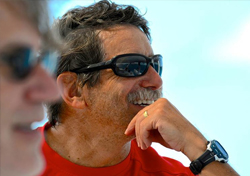
Because of Ron Bohem’s generosity and dedication to Haiti as well as his passion for the Haiti Dome project, CAN-DO was able to build medical clinics, classrooms and shelters throughout Haiti. We couldn’t have done it without you, Ron. Thank you!





